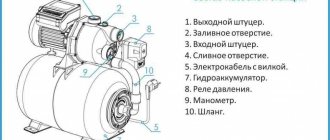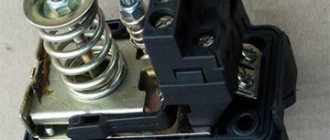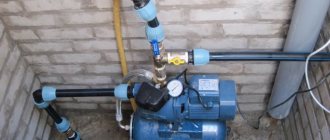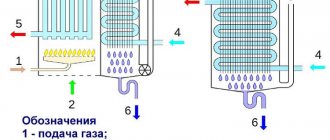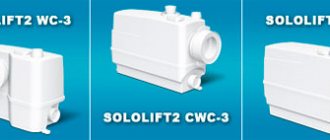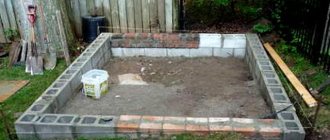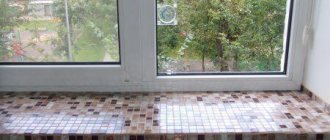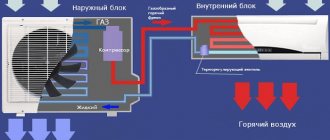Individual water supply for a private house or cottage can be from two sources - a well or a borehole. To automate the supply of water to the house, as well as to create stable pressure, it is necessary to install a pumping station. It consists of a pump, a hydraulic accumulator, a pressure switch and a safety group (pressure gauge and drain valve). The advantage of this idea is that any household appliance can work with such a water supply scheme; another good news is that connecting is not too difficult a task; if you wish, you can install and connect the pumping station with your own hands.
Connect to source
In order for the pump to steadily and evenly pump out water from the source, it must be located next to it. Therefore, it is installed either in the well itself or in the well caisson. If for some reason this is difficult to implement, then the pump is equipped with an ejector. And then the pump can be installed at any distance from the well without any problems. For example, in the basement of a house or boiler room.
Let's look at how to start a pumping station to supply water from a well. But first, let’s consider the conditions under which proper operation of the equipment is possible. We will also study the guide on how to correctly connect to the source and water supply system.
For normal operation of the pump you need to ensure:
- Dry and warm place with good ventilation.
- Free space for the device to operate. It should not touch walls or other objects.
- Trouble-free approach to equipment. So that nothing interferes with carrying out preventive maintenance or repair of equipment in the event of an accident.
Connecting equipment Source siiana.com
Therefore, wells, caissons and rooms in the house need to be insulated. And the latter are also soundproofed. Because the surface pump creates a fairly high noise level during operation. The caisson must be mounted so that its bottom is two meters from the surface.
If a single-pipe connection to the source is used, then there are no problems with it. It is suitable for cases where a surface pump is installed directly into a well or caisson. And the water level lies shallow from the surface.
Let's look at how to properly start a pumping station when the liquid is in a well at a depth of more than 7 meters, or the pump is installed in a house, which is far from the source. In this case, an ejector is connected to the pump and a two-pipe connection is required. It is considered the most difficult and will be discussed in more detail.
First of all, you need to connect the ejector to the pipeline:
- A coarse filtration mesh is installed on the lowest pipe of the ejector, which is responsible for receiving water from the source.
- A squeegee with a bronze coupling at the end is screwed into the upper outlet hole. It is needed like switching to plastic water supply.
Bronze coupling Source vagnerpool.com
- A similar squeegee, but of a different size, is mounted on the side pipe of the ejector, which is responsible for the water recirculation line.
Plastic pipes are attached to the couplings on the pipes. They should already be the required length to reach the water level in the well. An ejector attached to a double pipeline is lowered into the well.
A trench should already be prepared from the latter to the house, dug at a depth where the soil does not freeze. A pipeline is laid in it on a sand bed. The pipes coming from the well at this level are equipped with a transition elbow with a smooth bend and are connected to the underground main.
The latter enters the house through the prepared hole and connects to the storage tank. It is from this that the pump distributes all the water inside the building, as well as throughout the household. And part of the water immediately goes to the recirculation line to ensure continuous suction from the source.
Storage tank Source project-home.ru
See also: Catalog of companies that specialize in water supply, sewerage and related work
Features of the pumping station design
The structure of the pumping system contains a pressure switch designed to control the volume of water filling the accumulator. Additionally, its task is to turn the hydraulic pump on and off; when the tank is empty, the automation activates it, and when the liquid reaches a certain level during filling, it turns off the pump. Thus, the required pressure is maintained in the water supply system without human intervention. In addition to the relay, this complex system contains the following components:
- A hydraulic accumulator, which is a sealed container with a flexible membrane inside, which in certain models is replaced by a rubber bulb. This plate cuts the space of the hydraulic tank into two halves, one of which is filled with air, the other with water.
- A borehole or surface pump, which can be considered in two versions: centrifugal and vortex. It should be noted that the use of a vibration pump in the operation of the station is unacceptable.
- A check valve designed to prevent fluid from leaking from the accumulator when the pump is turned off.
- Power supply. To connect the installation to the electrical network, it is necessary to lay separate wiring, the cross-section of which must correspond to the power of the equipment. The electrical circuit device must be equipped with an automatic protection system.
The functional features of the pumping station are as follows. After the tap is opened at the point of the water intake structure, the liquid in the accumulator enters the system, at the same time the compression ratio in this tank decreases. When its value corresponds to a certain mark on the sensor, its contacts close and the pump motor starts working.
Following the completion of water consumption in the tap or when the compression force in the accumulator cavity increases, the pump stops working due to the operation of the relay.
Working with a hydraulic accumulator
When the pump is installed directly into the well, this makes it easier to operate without an ejector. But in order to provide the necessary water pressure in the building, you will need a hydraulic accumulator. After all, for a washing machine to operate, the water pressure in the system must be at least one atmosphere. For a dishwasher, you may already need two units. A shower with hydromassage or jacuzzi will only work at four atmospheres.
And before pumping the pumping station, it is necessary to prepare the hydraulic tank for operation. It can be installed significantly below the surface of the earth. This will not affect the water intake in any way, since this unit is responsible for pressurizing the system. You just need to adjust it correctly. Therefore, the unit can be installed not only in the boiler room, but also located directly in the basement of the building.
The hydraulic accumulator is a sealed metal tank with a membrane inside. It is also called pear. It is made from butyl, since the material has been selected according to hygiene standards. It also has high tensile strength.
Hydraulic accumulator Source allegroimg.com
Water from the source is initially pumped into the pear. The membrane fills, but cannot come into contact with the walls of the tank. Because the air pumped through the built-in nipple does not allow her to do this. It turns out that there is a rubber gasket between the water and the air. And if you pump the latter into the tank, it will cause the bulb to shrink and the water pressure in the system will increase.
But creating excess pressure is inappropriate. Excessive load will quickly destroy the working units of the station. Therefore, to control the pressure, a pressure gauge is installed on the tank. And when the pressure begins to exceed the norm, excess air is released from the container.
The atmosphere is pumped into the chamber using a car pump. And only when there is no water in the pear. This is done for a test run of the system before it is fully configured. Therefore, before starting the pumping station for the first time, it is enough to increase the pressure only to 1.7 bar.
Car pressure gauge Source vyborok.com
Setting non-standard parameters
The pressure in the devices may differ from the manufacturer's recommendations. This situation arises when it is necessary to configure the equipment to the individual characteristics of the system, depending on the pressure in the water supply station.
If you increase the difference between the on and off pressure values, the relay will operate much less frequently. This allows you to extend the life of the pumping station, but the water pressure will be inconsistent.
If water supply under high pressure is required, then the delta pressure values must be reduced.
This will cause the pump to turn on more often. When independently deciding how to adjust the pumping station, you must remember that deviations from the values recommended by the manufacturer can negatively affect the operation of the water supply system. The fact is that all components of the pumping station operate at certain pressure values, violation of which can cause equipment failure. Therefore, before you set up the automation on the pump yourself, you need to get advice from an experienced specialist.
Performing the first run
It will not be possible to put the system into operation until the pump itself is filled with water. There is a hole on the top of the pump body that is closed either simply with a plug, or with a valve built into it. It is necessary to open access to water and fill the entire system with it. You need to pour the liquid until it starts to come back out.
When starting the pumping station for the first time, it is necessary to check the operating pressure in the accumulator. If it is below normal, then you need to add it by pumping it with a car pump. When there is an excess, it is better to bleed off the excess through the nipple.
Rules for opening the system:
- After filling the entire pipeline with water, the plug or valve is tightened tightly.
- The pump is connected to the electrical network.
- Launch is in progress.
- To remove air from the system, open the nearest tap above the sink.
- It may take time for water to flow out of it.
- After the liquid appears, allow the unit to operate for 2-3 minutes.
- After this, turn off the system and proceed to its full configuration.
If water from the tap does not start flowing a couple of minutes after turning it on, this means that the system is not completely filled with water. It is necessary to turn off the pump and add liquid to it again.
Technical indicators
If you plan to install a pumping station for a dacha or household, when choosing it, pay special attention to performance. The best solution would be a design that will provide the required pressure from the well, capable of satisfying the need for water for domestic needs and for a personal plot.
For a comfortable stay outside the city for a family of 4 people, installing a water station of medium or low power is suitable. Typically, such designs are equipped with a hydraulic tank designed for 20 liters. They lift liquid from the well in a volume of 2 - 4 cubic meters per hour and create a pressure of 45 meters or more.
In addition, before installing a pumping station, when purchasing, take into account its dimensions, the water level when the pump is off and running, the type of filter and the cross-section of the pipes.
Setting up automation
A properly functioning system should function automatically. To do this, a pressure switch is installed in the hydraulic accumulator. It is necessary to turn off the pump when the maximum specified value is reached. And also, so that the pump turns on and starts pumping water again when the pressure drops to the minimum specified in advance.
All settings are made independently:
- The pump turns off and water is drained from the hydraulic tank. This can be done by unscrewing the special tap at the bottom of the system with a key.
- The pumping station start is activated again to fill the accumulator.
- When the pump is turned off, you need to record the pressure gauge readings. This will be the upper limit.
- After this, the tap farthest from the pump opens. While the water is flowing, you can adjust its pressure. To do this, you need to tighten the nut on the relay on a large spring.
- You must wait until the pump starts again. This will happen as the pressure decreases as water flows out.
- The recorded readings will correspond to the lower threshold.
Taking readings Source gaz-test.ru
- Next you need to find the difference between the upper and lower pressure.
- If the found parameters are close to 1.4 bar, then nothing else needs to be done. The system operates in optimal mode.
When the reading is below the standard value, the pump will start to run more frequently and the flow may become intermittent. This will lead to premature wear of working units. Higher values from the norm will allow the station to be operated in a gentle manner. But the difference between the maximum and minimum pressures will be very noticeable.
To adjust these parameters, the relay has a small spring. And its tension can be changed by unscrewing the nut. After completing the settings, the system is restarted. And if the results are not satisfactory, all actions are repeated.
Troubleshooting Methods
Troubleshooting jobs can be simple or complex. In the first case, it is enough to replace the cartridges in the filter and eliminate leaks. The second option involves taking further measures if simple measures do not produce results. In this case, it is important to know how to set up the hydrophore.
More complex troubleshooting steps for pumping equipment include adjusting the pressure in the hydraulic tank and adjusting the pressure switch. In this case, you need to know what pressure should be in the water supply station.
There are several problems with the operation of a household pumping station that you can try to fix yourself.
Operating rules
Manufacturers of pumping equipment give clear instructions on what needs to be done to ensure that their equipment operates without interruption throughout the entire declared service life. Carrying out preventive maintenance and timely elimination of all faults will extend the life of the pump and allow the system to operate fruitfully.
Features of operation of the pumping station:
- If the equipment is not used in winter, all water from the system must be completely drained. This will help avoid serious troubles associated with replacing entire units. And this needs to be done before the first frost.
Water drain tap Source water-vdom.rf
Possible errors when debugging a pressure switch
When adjusting the relay, you must remember that a small spring is more sensitive than a large one. The nut on the first one must be turned more slowly and carefully. And most importantly, the small spring does not set the water pressure itself to turn off the pump, but the delta between the automatic response thresholds.
When setting up, it is recommended to select this difference in the region of 2 atm. This corresponds to the normal filling of the accumulator with water (half). If you set the delta to about 1 atm, the tank will fill only 25–30%. And this is too little, the pump will run idle.
One more point - the lower threshold should not exceed 80% of the maximum pressure for a specific relay that comes with pumping equipment. If the pressure coming out of the taps is insufficient, then the relay switch will have to be replaced with a more “powerful” one.
It is recommended to check the pressure of the pumping station once every six months. You will need to drain the water completely. And then turn it on, checking the real threshold values on the pressure gauge. In general, adjusting the water pressure at a home autonomous water supply station should not cause problems. You only need to tighten a couple of nuts on two springs with a wrench or a screwdriver.
Briefly about the main thing
Before starting a system for drawing water from a source underground, you need to make sure that the equipment is connected correctly. If an ejector is used, check the presence of a recirculation line and its connection to the storage tank. When using a single-pipe connection to the pump, you need to prepare the hydraulic accumulator for operation in advance.
To start the system for the first time, you must completely fill it with water. And after checking the functionality, carry out the final adjustment of the automation. This will allow you to achieve better system functionality. Also, after adjustment, the equipment will be able to operate in a more gentle mode with greater productivity.
Ratings 0
